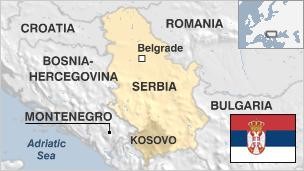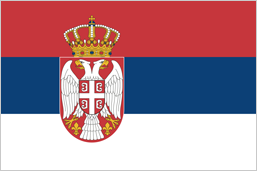Overview
Serbia is a land-locked country of 77,474 km2, located at the crossroads of Central and Southeast Europe. After the collapse of Yugoslavia, Serbia eventually became a sovereign republic in 2006. Serbia has been negotiating with the EU for its EU accession, gaining candidate status in 2012, but with the goal of becoming a member of the European Union by 2025. Serbia borders Hungary to the north, Romania to the northeast, Bulgaria to the southeast, North Macedonia to the south, Croatia and Bosnia and Herzegovina to the west, and Montenegro to the southwest. The country claims a border with Albania, also to the South, bordering on the territory of Kosovo. Serbia has a population of roughly 7 million people with the predominant language being Serbian, which belongs to the Southern-Slav language group. Significant minority groups include Hungarians.

Belgrade city at dusk
Socio-Economic Profile
Serbia is gradually executing fundamental economic reforms, that will help ensure the country’s long-term prosperity. Enhancements to the business environment as well as solid macroeconomic stabilization have helped the country attract elevated FDI inflows of EUR 7.3 billion during 2018 and 2019; which have helped develop and strengthen the economy.
Serbia has managed to convert, stabilize and grow its economy; with decreasing public debt, low levels of inflation, fiscal surplus, a meaningful reduction in external trade imbalances and advances in the labour market with accompanying employment growth.
Serbia’s economy is dominated by the following sectors namely: energy, automotive industry, machinery, mining, and agriculture. Trade plays a major role in Serbian economic output with the Main industrial exports being automobiles, base metals, furniture, food processing, machinery, chemicals, sugar, tires, clothing and pharmaceuticals.
Exports of products and services have retained their growth pattern for 2019, with a growth of 10.5%; driven by exports of services, agricultural goods and manufactured products.

Belgrade city at night
Agricultural products include: Wheat, maize, sunflower, sugar beets, grapes/wine, fruits (raspberries, apples, sour cherries), vegetables (tomatoes, peppers, potatoes), beef, pork, and meat products, milk and dairy products.
Contribution to GDP by economic sector is: Services 49.1%, Industry 41.1%, and Agriculture at 9.8 %. The average growth of Serbia’s GDP in the last 5 years was 2% per year.
Economists foresee Serbia’s GDP expanding to 3.5% in 2020, and stabilizing again at a rate of 3.5% during 2021.
Serbia’s sovereign credit ratings are as follows: Standard & Poor’s credit rating is at BB+ with positive outlook. Moody’s credit rating is at Ba3 with positive outlook, and Fitch’s credit rating is presently at BB+ with stable outlook.
Tourism is a sector that has great promise with the natural scenic countryside and cultural heritage on offer. During 2019, Serbia had about 3,7 Million of which about 50% was Domestic and 50% International visits.
Revenue from Tourism and the related hospitality trade is expected to have an annual growth rate of 3.5%, with a consequential increase in the market size of Euro 729 Million by 2023.
Brief Socio-Economic Profile – 2019

The Iron-gate on the Danube
Population: 7 million
GDP (PPP): $105.5 billion
GDP Growth: 1.8%
GDP 5-yearcompound annual growth: 1,2%
GDP per capita: $15,000
Unemployment Rate: 14.1%
Inflation Rate (CPI): 3.1%
Foreign Direct Investment (FDI) Inflow: $2.9 billion
Serbia is ranked 34th among 44 countries in the Europe region.


